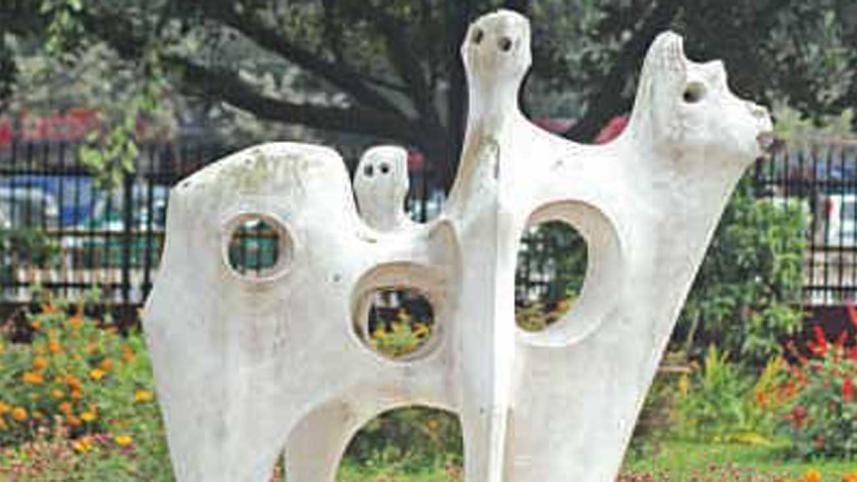Family by Novera Ahmed

Novera Ahmed, the first modern sculptor of Bangladesh, was born in 1930 in Kolkata. She earned a Diploma in Design for the Modelling and Sculpture course from Camberwell School of Art in London in 1955. At Camberwell, she studied under the renowned British sculptors Sir Jacob Epstein and Karel Vogel of Czechoslovakia. She also enriched her perspective on European sculpture by studying under Venturi Venturino in Florence and later in Vienna. She was credited alongside Hamidur Rahman for the original design of the Shahid Minar.
Within a short span of time, from 1956 to 1960, Novera had worked on about 100 sculptures in Dhaka. Her first and last exhibition was held in 1960. Out of 100, 33 sculptures were collected by the Bangladesh National Museum (BNM). Her sculptures have become a part of history. Novera's sculptures in BNM are a part of her family series which was influnced by the rural life and folk motifs of Bangladesh. The sculptures represent the love between women and their children and also execute male and female figures from different angles.

Photos: Kazi Tahsin Agaz Apurbo



 For all latest news, follow The Daily Star's Google News channel.
For all latest news, follow The Daily Star's Google News channel.
Comments